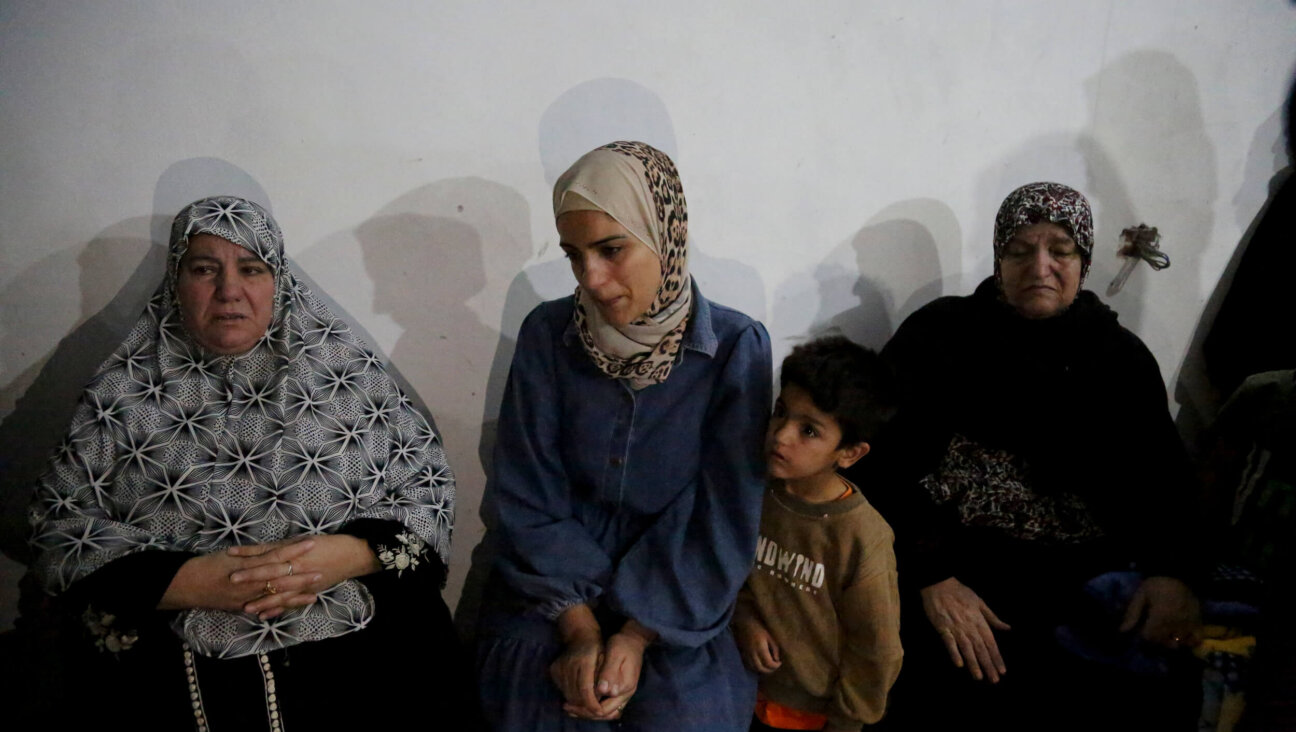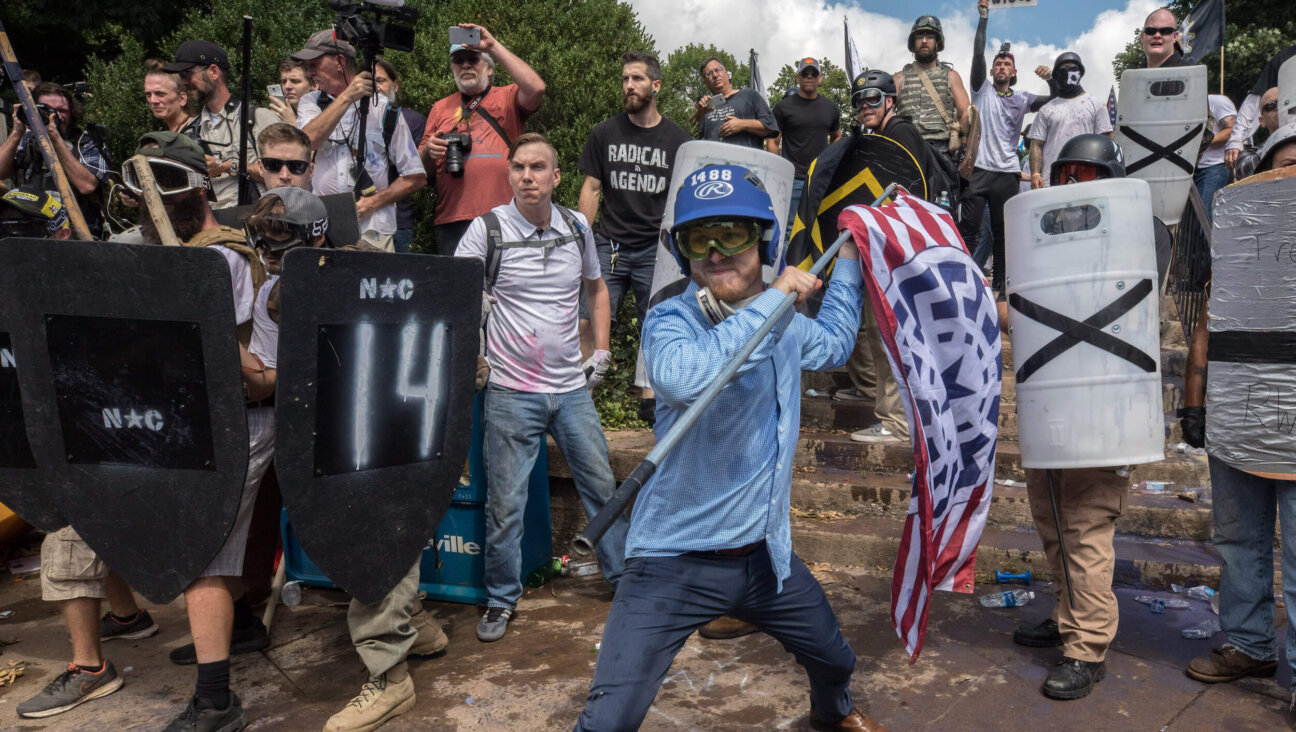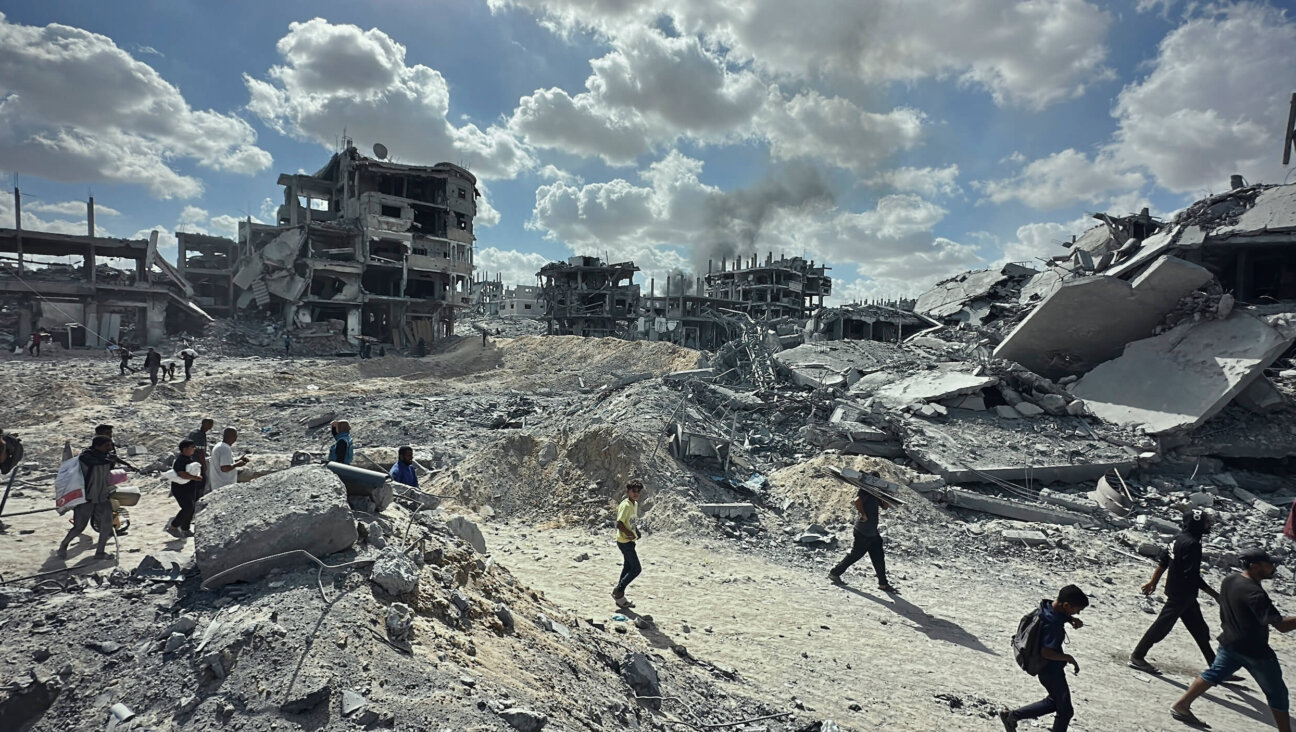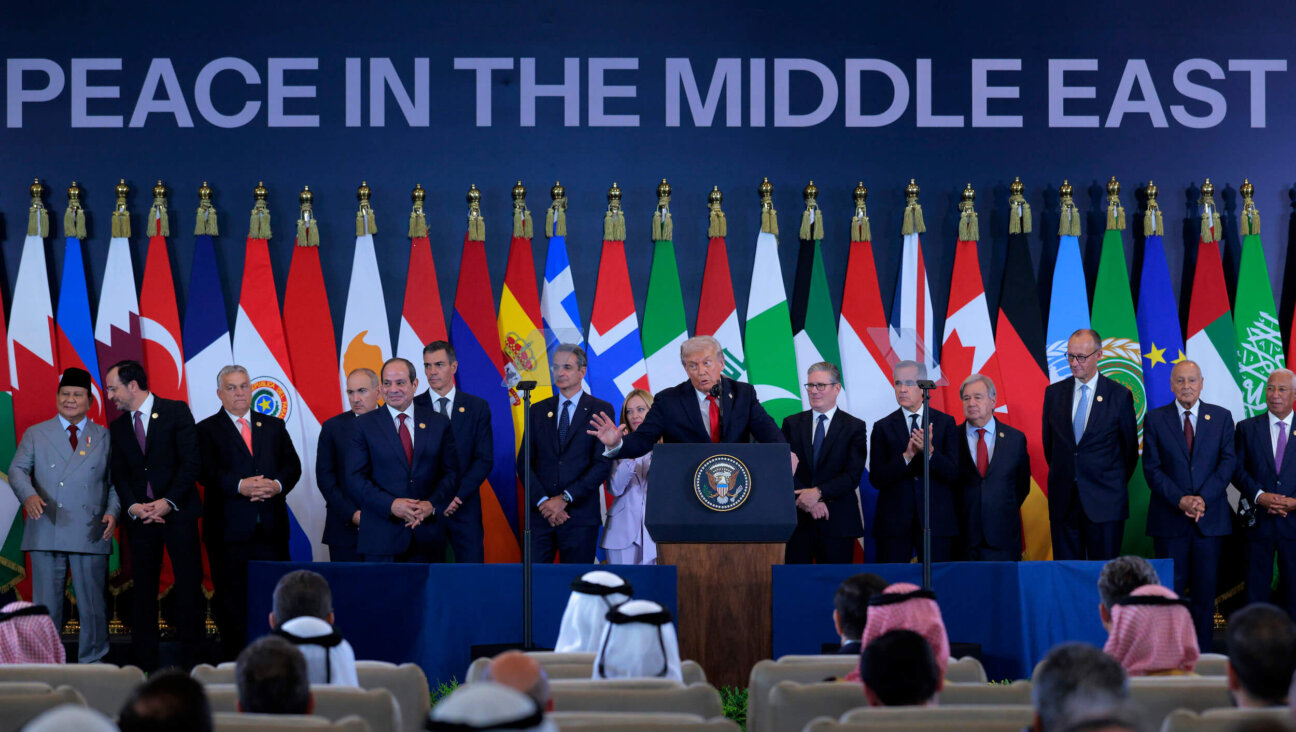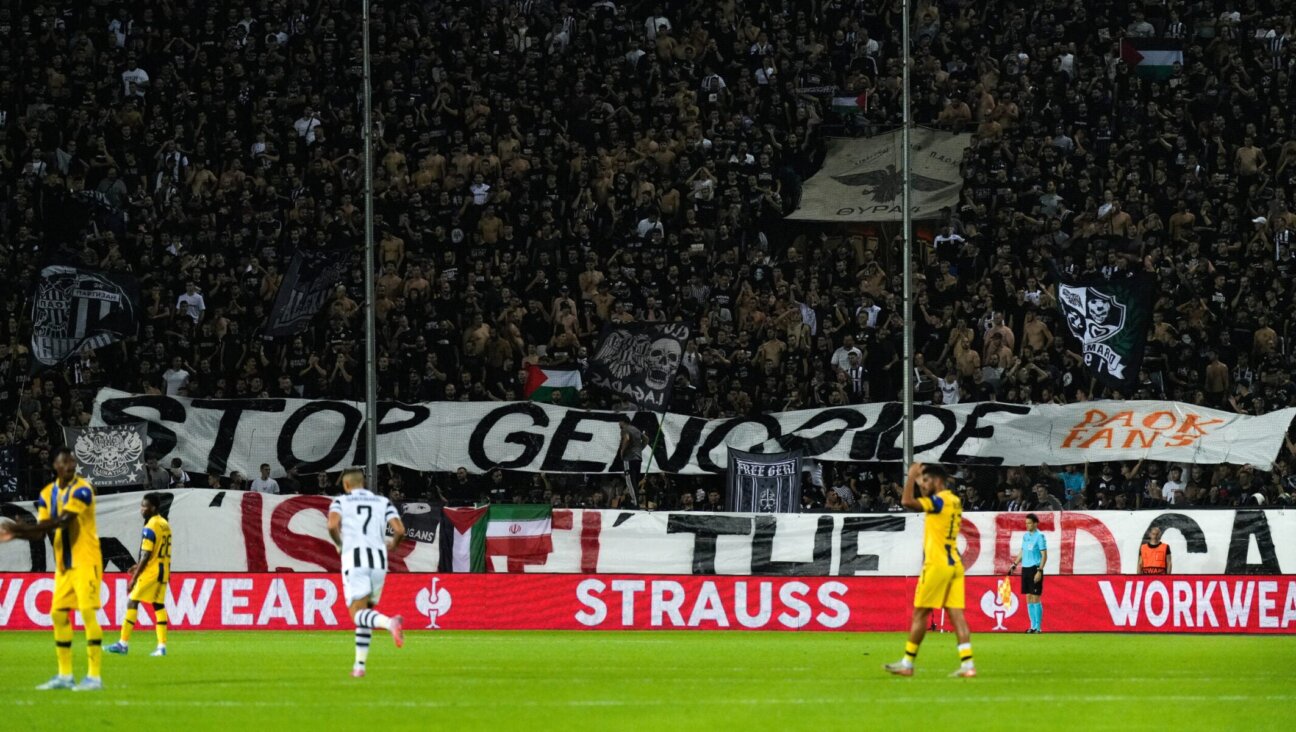Why Another War in Gaza Is All But Inevitable

Image by getty images
Sign up for Forwarding the News, our essential morning briefing with trusted, nonpartisan news and analysis, curated by senior writer Benyamin Cohen.
It is increasingly clear that the Gaza war that ended in August will soon produce… another Gaza war. Exactly how soon is a matter of conjecture. But all the signs are there.
Operation Protective Edge did not end in late August in anything approaching lasting coexistence between Israel and Hamas. For that to happen, the war needed to produce a package of stabilizing measures: political, economic and strategic. Despite a lot of wishful thinking expressed in and around the cease-fire agreement, virtually none of those measures has materialized.
The entry into Gaza of a Palestinian unity government representing both the Fatah-led Palestine Liberation Organization and Hamas was supposed to ensure that the moderate West Bank-based Palestinian Authority would administer the strip, pay security establishment salaries there and monitor the passages linking the strip to Egypt and Israel. So far, nothing of the sort has happened. Indeed, Mahmoud Abbas, leader of the PLO and the P.A., angrily accuses Hamas of fomenting an intifada on the West Bank to undermine him.
If the PLO and Hamas aren’t cooperating, at least Israel and Hamas are scheduled under the Egyptian-brokered cease-fire to begin indirect talks in Cairo in late September to deal with both sides’ strategic objectives during the war. Israel wants Gaza demilitarized; Hamas wants an airport and a seaport, along with wide-open land passages to ensure its economic growth and stability. There is no chance that either side will acquiesce to the other’s conditions. The very act of meeting again in Cairo to discuss these issues is in doubt.
But surely the outside world will step in: Egypt and Norway are planning an international donors’ conference for mid-October in Cairo. But serious donors are not exactly lining up to give. After this third Gaza war in six years, they are no longer prepared to throw money at Gaza reconstruction given the lack of Palestinian unity and the near-certain knowledge that another destructive war launched by Hamas is around the corner. And Israel, which should be at the table because it borders Gaza on three sides and will be asked to deliver the bulk of reconstruction aid, will not be invited, because some Arab donors object.
Beyond these practical problems, we encounter fanciful concepts of solving the conflict by “turning Gaza into a Singapore” — a slogan heard since before the Oslo process even began 21 years ago. Sadly, it is predicated on the false assumption that the roots of the conflict are economic rather than political, ideological and, in Hamas’s case, Islamist.
Would a decisive United Nations Security Council resolution creating a U.N. peacekeeping force help? Hamas rejects a third-party presence, while the Netanyahu government pulled back from its initial interest and advocacy for one once it understood that the resolution would call for two states based on the 1967 lines, a position it rejects.
This hints at an even more fundamental reason that we’re headed for yet another Gaza conflict. Benjamin Netanyahu does not have a strategy for Gaza beyond “quiet in return for quiet.” He does not even have a viable strategy for resolving the Palestinian issue in general: You cannot claim to support a two-state solution while building more and more settlements to satisfy your constituents and coalition partners. The latest manifestation of this contradiction was the act, immediately after the war, of declaring 1,000 acres in the West Bank “state land” and planning a major new settlement there.
Nor does Netanyahu’s inclination to compare Hamas to the militant group, the Islamic State in Iraq and Syria, reflect a viable strategy beyond a transparent attempt to ingratiate Israel with America’s anti-ISIS coalition. President Obama vows to defeat or cripple ISIS; Netanyahu has no desire to reoccupy Gaza and eliminate Hamas.
And in the absence of a strategy, it seems that Israel has little if any solid strategic intelligence regarding the behavior of the Hamas leadership. What makes Hamas go to war? What makes it accept a cease-fire? Throughout nearly two months of fighting, Israel seemed clueless. Why did the destruction of Hamas’s attack tunnels and thousands of homes and the death of some 2,000 Gazan fighters and civilians make no impression on the leadership, yet the toppling (without a single death) of three luxury high-rises in Gaza City seemingly changed the Gazan cost-benefit calculation and ended the war? Does Israel know what to make of the statement in early September by a lone Hamas leader that the militant Islamist movement could enter direct negotiations with it and that Gazans support such a move? On the other hand, is Hamas’s dramatic postwar rise in popularity among Palestinians likely to motivate it to launch another one?
To be sure, there are a few countertrends that ostensibly do offer hope for a measure of stability rather than war. For example, Israel, Hamas and the United Nations just agreed on ways to allow reconstruction to begin in the Strip. And the Israeli military is pressuring the Netanyahu government to liberalize procedures for Gazans to enter Israel. But the strategic impasse far overshadows these gestures.
If Hamas believed in early July that it made sense to initiate a war with Israel, it probably still does. A ceasefire-violating rocket was already fired into Israel on September 16. A month from now or six months from now, one will hit a border kibbutz and restart the fighting.
Yossi Alpher is the author of “Periphery: Israel’s Search for Middle East Allies,” coming in February 2015 from Rowman & Littlefield.
